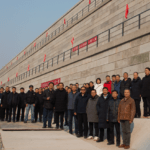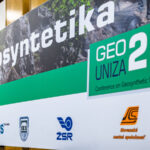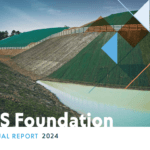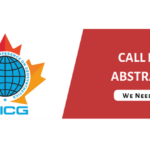The IGS Vice President made a rallying call for using the human touch to improve understanding of geosynthetics during an interview with industry pioneer Dr. J P Giroud.
Dr. Nathalie Touze gave the prestigious Giroud Lecture at the recent International Conference on Geosynthetics (ICG) in Seoul, Korea. Dr. Giroud called her talk “absolutely outstanding”.
In the interview, part of the Two For A Few series, Dr. Touze said the IGS had a vital role to play in raising awareness among all stakeholders.
“The IGS is a human society and we tend to forget that. People attach more importance to social connections and values. The IGS can show the way to many people. For example, in environmental justice, the IGS can show the way by bringing more environmental justice, sharing resources and information,” she said.
Titled ‘Healing the world: a geosynthetics solution’, Dr. Touze’s lecture, which she said was inspired by philosopher Frédéric Lenoir’s book La Guérison du Monde, suggested ways geosynthetics could improve the socio-economic, environmental and resource challenges faced by the modern world.
An example was the issue of pollution and environmental sustainability.
“Geosynthetics play an important role in the protection of the environment but in many countries the economic situation is not so good so the tendency is to reduce the budget for measures aimed at protecting the environment. There is a belief protecting the environment costs money but at the same time geosynthetics can protect the environment and save money on the projects. This is a very important statement,” Dr. Touze told Dr. Giroud.
“Pollution controls economic development is a wrong statement. Pollution prevention can yield large net gains. For example, reducing waste and the cost of imported materials. Using natural materials brings more sustainability to geosynthetics.”
But Dr. Giroud played Devil’s Advocate.
“There is a potential risk of pollution by geosynthetics themselves,” he said. “They have long durability, can be around for centuries and well beyond their service life. Is there a risk the public one day could consider geosynthetics are like plastics today, and undesirable?”
Dr. Touze said it was true geosynthetic materials contained additives and these could leak into the environment but their advantage was they were buried or inside works. However, she acknowledged more research and answers were needed.
“We should get out of our box and address the real questions. It’s time for action,” she said.
She added: “Teaching is repeating but repeating always the same message in the same way you do not always succeed. We need to multiply the way we communicate with people.
“The IGS can no longer work on its own. If we want people to appropriate knowledge we need the help of human and social sciences that would facilitate the appropriation of the knowledge. Get out of the box and be open to other disciplines.”
Dr. Giroud said: “You gave a special new dimension to our discipline by showing how geosynthetics can address the issues of our times. The human touch was the special touch of your lecture.”
Dr. Touze’s full paper will soon feature in Geosynthetics International.
A short video highlighting the main topics in Dr. Touze’s full lecture can be found here below and our YouTube Channel.
Dr. Touze will be giving her Giroud Lecture again at two events in August – at Regeo & Geossintéticos 2019 in Brazil on August 14, and for IGS Chile members on August 16.






















